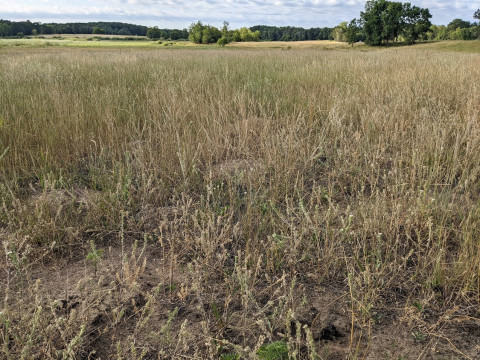Increasing Biodiversity in Prairies
Prairie once covered 1/3 of Minnesota. Today only a little more than 1% of native prairie remains. Prairie is a key habitat for 34 Species in Greatest Conservation Need (SGCN) and for many at-risk pollinators in Minnesota. It is important to maintain and enhance the little prairie that is remaining to help out these important species. Anoka County Parks maintains prairie habitat on County land with prescribed burns every 3 to 5 years. ACD helped manage weeds before the scheduled burns and overseeded a custom seed mix for each site after the burns. The native seed mixes contain species that are minimally present or not present at all the prairie units. Species that benefit at-risk pollinators were included in the mixes. The goal is to enhance the prairies by reducing non-native weeds and increasing native biodiversity.
Bunker Hills Regional Park Pasture Unit includes a wetland depression surrounded by dry prairie. Site preparation involved controlling non-native woody encroachment and monoculture patches were sprayed or mowed. ACD overseeded following a prescribed burn in the fall. The seed mix contained 41 different forb species and 5 different grass species. A mix of wildflowers provided pollen and nectar sources for several endangered species of Bumble Bees. For more information contact Carrie Taylor, Restoration Ecologist,

